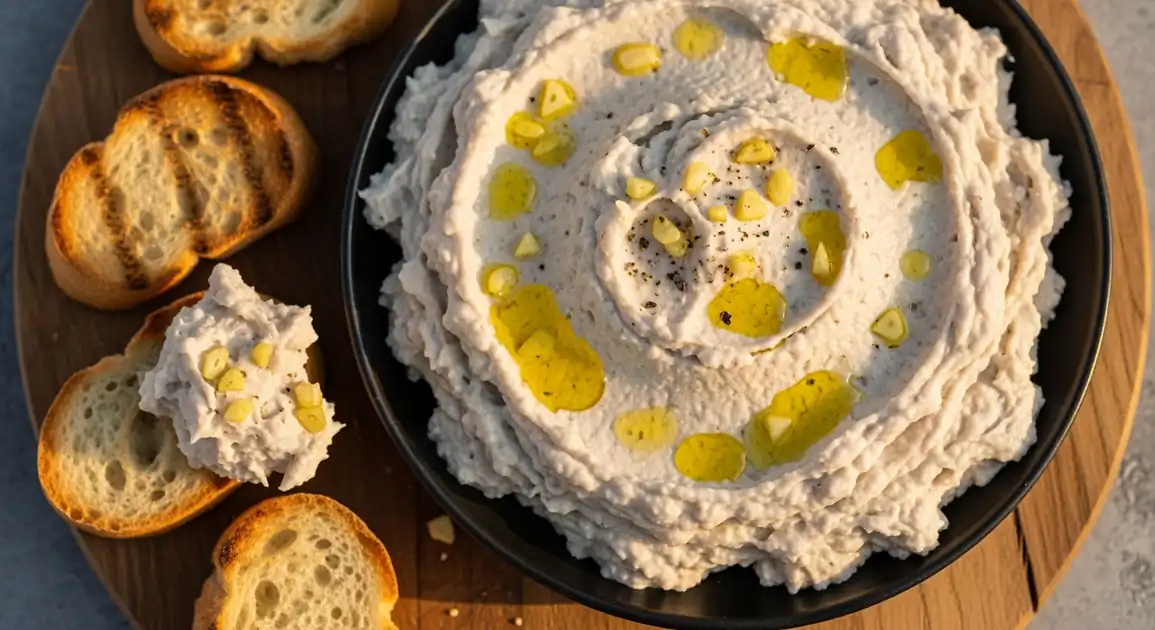Brandade de Morue
Brandade de Morue

Description
In Marseille, France's oldest city and busiest port, Brandade de Morue holds special significance as part of the rich local seafood tradition. This Mediterranean metropolis has historically been a major trading point for salt cod, and the dish reflects the city's connection to both the sea and Provençal culinary heritage. Marseille's version often features the region's exceptional olive oil and sometimes incorporates local aromatic herbs.
Dietary Information
Serving information
Serving style
In Marseille, often served with local bread like fougasse or accompanied by small Niçoise olives. Sometimes presented with a light salad dressed with olive oil and lemon juice. Home-style restaurants might serve it in a terracotta dish.
Quick facts
Markets: 8 AM - 1 PM. Restaurants: 12 PM - 2:30 PM, 7 PM - 10:30 PM. Specialty food shops: typically 9 AM - 7 PM.
Safety Tips
What to Look For
-
Freshly made brandade with pleasant, mild fishy aroma
Quality brandade should smell fresh and inviting—a mild cod scent balanced by olive oil and garlic. Avoid any that smells overly fishy or sour.
-
Proper temperature control for ready-to-eat brandade
When sold ready-to-eat, brandade should either be kept properly chilled (below 4°C/39°F) or served warm (above 63°C/145°F), not left at ambient temperature for extended periods.
-
Careful handling practices when serving
Observe if the vendor uses clean utensils and proper food handling techniques, particularly at market stalls or delicatessens.
-
Clean, well-maintained equipment and preparation areas
Visible cleanliness in preparation and serving areas indicates attention to food safety principles.
What to avoid
-
Brandade with separated oil or watery pools
Properly made brandade should maintain its emulsion. Separation indicates poor technique, improper storage, or age.
-
Gray or yellow discoloration
Quality brandade should be white to off-white. Discoloration suggests oxidation, spoilage, or poor-quality ingredients.
-
Strong, unpleasant fishy smell
While brandade naturally contains fish, an overtly strong or ammonia-like odor indicates the cod may not be fresh or was improperly desalinated.
-
Brandade that's been sitting at room temperature for unknown periods
Since it contains fish and dairy, brandade can become a food safety risk if left unrefrigerated for too long, especially in warm weather.
Price information
Price range
Budget tips
- Markets like Marché Capucins offer the best value, with 100g portions starting around 3-5 EUR.
- Some seafood restaurants include brandade as part of a fixed-price menu (menu fixe), which can be economical.
- Local traiteurs in residential neighborhoods often have better prices than those in tourist areas.
- The Noailles district offers good value from shops catering to locals.
Value indicators
- Made with AOC/AOP Provence olive oil.
- Properly emulsified texture without separation.
- Served with quality bread, particularly fougasse or pain de campagne.
- A generous portion relative to price in restaurants.
Where to Find This Dish
Vieux-Port (Old Port)
The historic harbor area features numerous seafood restaurants serving traditional brandade.
Quai des Belges, Hôtel de Ville, La Canebière
Lunch, Dinner
Noailles Market Area
The multicultural neighborhood around Marché des Capucins offers authentic, affordable versions.
Marché des Capucins, La Canebière
Morning, Early Afternoon
Le Panier
The old town district has traditional restaurants and specialty shops selling authentic brandade.
Place de Lenche, Vieille Charité
Lunch, Evening
Corniche Kennedy
Upscale seafood restaurants along the coast often feature refined versions of brandade.
Vallon des Auffes, Plage des Catalans
Lunch, Dinner
Vendor Tips
- Seafood restaurants displaying the 'Bouillabaisse Charter' sign often take equal care with their brandade.
- Ask if they make their own brandade or purchase it from a supplier—homemade is preferred.
- In markets, vendors who also sell fresh and salt cod likely make more authentic brandade.
- Request it served warm rather than straight from refrigeration for the best experience.
How to Order
Regional Variations
-
Brandade à la Marseillaise
(Brandade à la Marseillaise)
The Marseille variation sometimes includes a touch of saffron or pastis (anise liqueur) for a subtle local flavor, and may be garnished with local black olives.
-
Conserved Brandade
(Brandade en Conserve)
Some Marseille specialty shops sell brandade in sealed jars for longer storage, a tradition dating back to the city's maritime history when preserved foods were essential.
-
Brandade with Aioli
(Brandade à l'Aïoli)
A distinctive Marseille serving style featuring the city's famous garlic mayonnaise (aioli) served alongside or swirled through the brandade for extra richness.
-
Brandade Bites
(Bouchées de Brandade)
A modern Marseille interpretation serving small brandade-filled pastry cups or tartlets as finger food in contemporary restaurants.
Cultural context
History
Originating in the Mediterranean coastal regions of France, particularly Provence, Brandade de Morue dates back to the 18th century. The dish evolved as a creative way to transform preserved salt cod—a vital staple for inland communities before refrigeration—into a refined delicacy. The city of Nîmes claims a special connection to the dish, with Brandade de Nîmes being recognized as a distinct culinary heritage item. The dish reflects the historical importance of salt cod trading in Mediterranean port cities like Marseille.
Local significance
In Marseille, brandade represents the city's historical connection to Mediterranean trade routes and the importance of salt cod as a staple before refrigeration. It showcases the city's talent for blending simple ingredients into refined cuisine.
Eating customs
- In Marseille, often enjoyed as part of a series of small dishes rather than as a main course.
- Local tradition suggests enjoying brandade with a pastis aperitif before a meal.
- Appreciated for its subtle flavors—locals don't typically add additional seasoning.